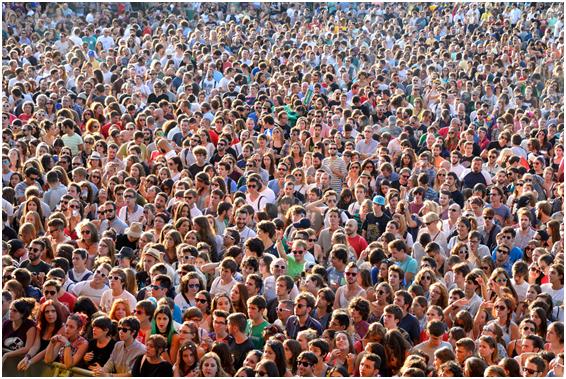 A crowd can seem like a fairly innocent gathering, but the dangers the pose can be real. Mass gatherings such as stadium concerts, a football match or any type of celebration can become a dangerous situation if crowds become crushed. It’s not just when crowds panic things go wrong, as even in the calmest crowd, movements can become a fluid force that crushes individuals who are trapped within the surge.
A crowd can seem like a fairly innocent gathering, but the dangers the pose can be real. Mass gatherings such as stadium concerts, a football match or any type of celebration can become a dangerous situation if crowds become crushed. It’s not just when crowds panic things go wrong, as even in the calmest crowd, movements can become a fluid force that crushes individuals who are trapped within the surge.
Investing in and working with pedestrian modelling software, UK technology firm Oasys software is using technologies that allow architects to design buildings that are structurally safe so that the risk to crowds is reduced. Event organisers and owners of structures are obliged by law to ensure that crowds are safe. Furthermore, dangers that are listed by the government are as follows:
- Crushing between people.
- Crushing against fixed structures such as barriers.
- Trampling.
- Surging, swaying or rushing.
- Aggressive behaviour.
- Dangerous behaviour such as climbing on equipment or throwing objects.
What dangers can a crowd pose?
A common misconception is that trampling is the main cause of death during a crowd disaster; it is usually the case that the movement of people can be more of a powerful force that unfortunately leads to death. Resulting in a force of up to 4,500 Newtons, or 1,000lbs, crowd surges are the most likely cause of crowd disasters. Not only are crowds a problem, but objects that keep a crowd safe also become a problem; for example, steel railings can be bent and may at times cause injury to passers-by. Resulting from an exerted pressure, this can cause compressive asphyxia, which is the most common type of suffocation during a crowd surge.
Like trampling, ‘stampedes’ are not the most common cause of a fatal crush. Rather than many people running on top of a group, a single trip or fall by one member of a crowd can result in a chain reaction that creates confusion and potentially lead to a disaster. Usually, this type of accident will happen when there is a crowd that has six or more people per square meter.
One of the most tragic examples of this was during the Ibrox Disaster in 1971, which was when a crowd surge caused many deaths – resulting in 66 people dying. This was most likely caused by someone tripping down the stairway, leading to a pile up from the back of the crowd to the front. For many, this unfortunately led to compressive asphyxia as a result of the rate at which people were moving forwards, leaving the people at the back of the crowd with nowhere to go.
Evaluating the extent to which a possible problem within a crowd could lead to a disaster is important to ensuring crowd safety in the long term. Through the ability to pre-empt a threat within a crowd before it happens, technologies such as crowd simulation are allowing event organisers to spot the problems with a venue in relation to the amount of people within a space. If these types of technologies are used during every major event hosting a large crowd, then minimising the risk to spectators and reducing the amount potential causalities is surely something that can be achieved.
Sources:
http://www.bbc.co.uk/programmes/b00x53wd

